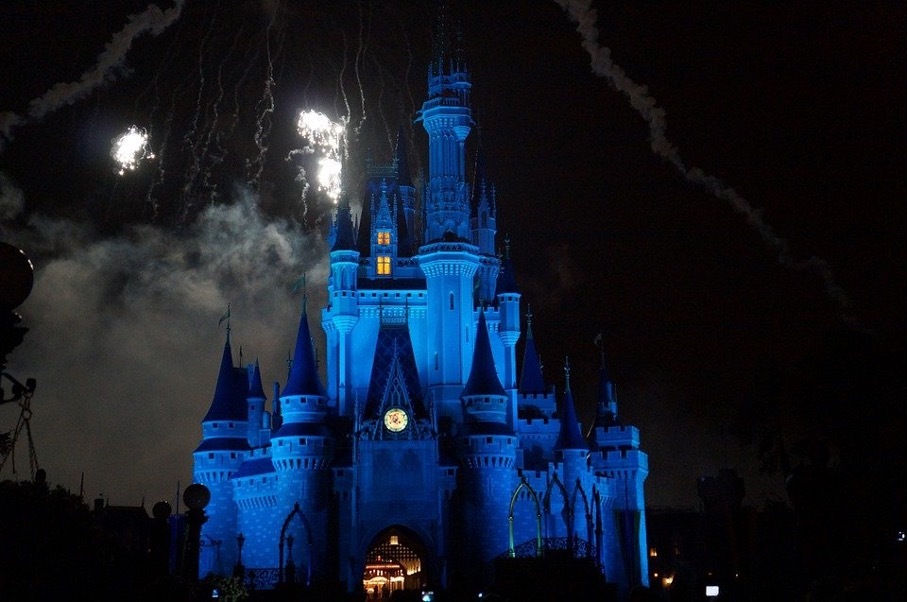 While most people know how Steve Jobs changed computing, few know how he changed movies...
While most people know how Steve Jobs changed computing, few know how he changed movies...
The late Apple (AAPL) founder famously revolutionized the world of computers in the 1980s by bringing a graphical user interface ("GUI") to personal computing.
In 1985, Jobs created NeXT after being forced to resign from Apple. NeXT began as a project for creating computer workstations for higher education, and it had to be affordable for college students and powerful enough to run complex simulations.
Around the same time, Jobs started thinking of other industries that might need high-end computer graphics – areas like hospitals for MRI imaging and intelligence agencies for satellite pictures came to mind.
In his search, Jobs was the winning bidder for Star Wars creator George Lucas' television and film production's computer division, known as Pixar, for $10 million.
Pixar had great technology for a television and film production company, and it had a fair number of creatives on staff.
Jobs gave the team the task of selling high-end computers, which were overly expensive and without much of a market. The group's first computer, the Pixar Image Computer, came at a jaw-dropping price of $135,000.
It was clear this kind of hardware wasn't going to see enough commercial interest. In the process, Jobs realized that Pixar's potential didn't lie with hardware, and it was in animation.
Jobs had the group sell its hardware division to focus on its most profitable venture, helping Disney (DIS) with early forms of computer animation. It was a move that set the "House of Mouse" on its path to the powerhouse we know it as today.
 Pixar changed the game in animation...
Pixar changed the game in animation...
Pixar tried to break into the animation world by creating animated commercials and short films using a different model. In the 1980s and early 1990s, animated movies were produced using a combination of hand-drawn frames.
Understandably, it was a time-consuming and expensive process. A two-minute animation could take as much as a month to make when drawn by hand.
For this reason, movie studios were just starting to be comfortable with certain animations to be made with computers.
Pixar could make an entire animated film using these computer animations without any drawing required.
But even the likes of Disney didn't see the potential for fully computer-animated movies. A year after selling Pixar's hardware division, Jobs brokered a deal with Disney that sealed Pixar's fate.
Disney agreed to finance and market Pixar's first feature film, Toy Story.
Toy Story was a huge success – the movie managed to make $39 million in the first five days of its release in 1995, and the franchise remains beloved to this day. More importantly, the film paved the way for modern movie animation.
Pixar continued to make famous animated movies like The Incredibles, Monsters, Inc., Ratatouille, and Cars.
While we know how Pixar's story unfolded, at the time, it was an enormous gamble for Jobs. Pixar was unprofitable for several years, and he practically bankrolled the company personally until it garnered commercial success.
Within a few days of Toy Story's launch, Pixar started trading on the stock market, and after its first full day, it was valued at $1.5 billion.
Jobs turned a $10 million investment into a company worth more than $1 billion, but he wasn't done there...
By the early 2000s, when Pixar was making movies on its own, Disney was desperate to catch up. Jobs sold the company to Disney in January 2006 for $7.4 billion. After the acquisition, Jobs owned roughly 7% of Disney, making him the single largest shareholder.
Thanks to Jobs' confidence in the future of animation, he has left a legacy of animation that continues today.
 Jobs' final visionary prediction is just now starting to play out...
Jobs' final visionary prediction is just now starting to play out...
His final prediction came only months before he passed away in 2011.
At the time, few people understood what he meant.
Keep in mind that this is the same inventor who accurately predicted the Internet, laptop computers, Siri and Alexa voice assistants, e-commerce, and cloud computing, to name a few... long before these things were blips on the radar.
And today, with so many digital technology stocks crashing all around us, it's becoming clear that Jobs' final prophecy is coming to life right now.
In a brand-new presentation, I explain how Jobs' final prediction will transform the economy and your investments... creating tremendous wealth for those positioned the right way. And to ride the wave, you need to be in the right stocks now, just before they take off.
To make sure you're on the right side of investing history, click here.
Regards,
Joel Litman
March 16, 2022
P.S. You can get the name and ticker symbol of one of my favorite ways to play Jobs' final prophecy, totally free of charge, right here.



 While most people know how Steve Jobs changed computing, few know how he changed movies...
While most people know how Steve Jobs changed computing, few know how he changed movies...

